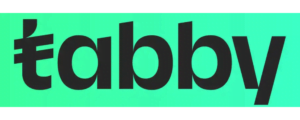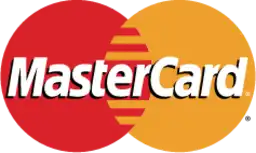Starting to learn graphic design online can open many exciting doors. It’s great for boosting your creativity, building a portfolio, or starting a new career. Graphic design courses cover important topics and offer many benefits, leading to various career paths in the design world.
Key Takeaways
- Explore the fundamentals and advanced topics in graphic design courses.
- Discover the benefits of professional graphic design training.
- Learn how graphic design courses can boost your career prospects.
- Diverse career opportunities await you in the graphic design industry.
- Enhancing creativity and building a professional portfolio are key advantages.
Introduction to Graphic Design
Graphic design is the art of making visual content to share messages. Designers use visual hierarchy and layout to meet user needs. They focus on how to display elements in interactive designs for the best user experience.
What is Graphic Design?
Graphic design is about creating layouts, images, and typography to share messages. It combines creativity with strategy. Using visual compositions, designers solve problems and share ideas. Knowing graphic design fundamentals is key for all design work.
The Importance of Graphic Design
Graphic design is vital in many fields. In marketing, it creates eye-catching ads. For branding, it sets a company’s identity with logos and colors. Digital communication uses graphic design fundamentals for websites and apps.
Graphic design makes information more accessible and engaging. It improves the visual communication experience.
Why Take Graphic Design Courses?
Starting a career in graphic design can be very rewarding. Graphic design courses teach more than just technical skills. They help you grow personally and professionally. You’ll improve your creativity and build a strong portfolio for your future career.
Enhancing Creativity
Graphic design courses challenge students in fun and unique ways. These challenges help you think creatively and explore new ideas. You’ll learn new design concepts and techniques, making your creative skills sharper.
This environment is perfect for growing in a graphic design career. It pushes you to be your best.
Building a Professional Portfolio
Having a professional portfolio is key to success in graphic design. Graphic design courses help you build one. With the help of experienced teachers, you can show off your skills and creativity.
A good portfolio opens doors to job opportunities. It shows your dedication to creative skills, which employers value a lot.
Topics Covered in Graphic Design Courses
Graphic design courses cover a wide range of topics. They teach students the basics of graphic design and how to use design software. Let’s explore the main subjects in these programs.
Fundamentals of Design
Learning the basics of design is key for graphic designers. These basics include balance, contrast, alignment, hierarchy, and proportion. Practicing these helps create designs that look good and work well.
Typography
Typography is crucial in graphic design. Courses focus on choosing the right fonts, typesetting, and placing text in designs. Knowing typography well can make a design more readable and attractive.
Color Theory
Color theory is vital for designers. Courses teach about the color wheel, color harmony, and how colors affect us. Understanding color theory helps designers create designs that catch the eye and touch the heart.
Software Tools
Graphic design courses spend a lot of time on software skills. Adobe Creative Suite, like Photoshop, Illustrator, and InDesign, is key. These tools help turn ideas into real designs. Knowing how to use them is essential for today’s design work.
Best Graphic Design Programs
Choosing the right graphic design program is key for aspiring designers. Top colleges and universities, along with specialized design schools, offer the best programs. These places are known for their strong reputation and creative focus.
Top Colleges and Universities
Top graphic design schools include the Rhode Island School of Design (RISD), California Institute of the Arts (CalArts), and the School of Visual Arts (SVA). These schools are known for their tough courses, great teachers, and strong industry ties.
- Rhode Island School of Design (RISD): RISD is famous for its detailed design courses and focus on the industry. It offers a deep learning experience.
- California Institute of the Arts (CalArts): CalArts is known for its creative design programs. It focuses on visual storytelling and experimental design.
- School of Visual Arts (SVA): SVA is in New York City. It connects students to real design jobs and professional networks.
Independent Design Schools
Independent schools like The Savannah College of Art and Design (SCAD) and the ArtCenter College of Design are also top choices. These schools focus only on creative fields, giving students a deep education.
- The Savannah College of Art and Design (SCAD): SCAD’s design programs prepare students for the design world. They learn the skills to succeed in a competitive field.
- ArtCenter College of Design: ArtCenter in Pasadena is known for its design programs. They focus on visual communication and working with the industry.
Whether you pick a famous university or a specialized school, attending a top graphic design school is a great choice. You’ll get access to programs that can start your career off right.
Online Graphic Design Classes
Online graphic design classes are now a flexible and convenient way to learn. They are perfect for both beginners and those looking to improve their skills. These classes offer many benefits.
Flexibility and Convenience
Online graphic design classes are very flexible. You can learn at your own pace, which is great for those with busy lives. You can access courses anytime, anywhere, making learning easy and flexible.
Course Platforms
Many popular platforms offer online graphic design classes. Coursera, Udemy, and Skillshare are top choices. They have courses for all levels, including self-paced and instructor-led options. Each platform has unique features, helping you find the right fit for your learning style and goals.
Affordable Graphic Design Courses
Starting a career in graphic design doesn’t have to be expensive. There are many ways to get into graphic design without spending a lot of money. Looking for cheap options and using free resources can really help.
Budget-Friendly Options
Community colleges offer great graphic design programs at lower costs. Online platforms also have discounts on courses, making them more affordable. Websites like Coursera and Udemy often have sales, helping you save money.
Short certification programs are another good choice. They focus on specific skills and are cheaper than longer degree programs.
Free Resources
There are also many free graphic design resources. YouTube has many channels with design tutorials, from Photoshop to typography. Open courseware from places like MIT and Stanford is also free.
These resources let you learn a lot without spending money. They’re perfect for those on a tight budget. By using both affordable courses and free resources, you can improve your skills without breaking the bank.
Graphic Design Certification and Accreditation
Getting a graphic design certification can really boost a designer’s portfolio. It shows off their skills and knowledge. It proves they are up-to-date with the latest design tools and methods.
Choosing accredited programs means the education meets industry standards. This gives designers an edge in the job market. These programs are checked by groups like the National Association of Schools of Art and Design (NASAD).
Accredited programs make learning better and open up more career doors. Employers look for candidates with certified courses from accredited schools. They think this training is top-notch.
The benefits of a graphic design certification are many. It brings recognition and can lead to better pay and more respect in the field. So, it’s key for designers to pick accredited programs for a rewarding career.
Graphic Design Workshops and Short Courses
Graphic design workshops and short courses are great for boosting your skills quickly. They don’t require a long-term commitment like full programs do. These formats focus on hands-on learning, letting you dive deep into specific techniques and concepts.
Intensive Learning
Workshops are known for their intensive learning. They pack a lot of knowledge into a short time. This makes them perfect for beginners and experienced designers alike.
Participants work on projects right away. This way, they can apply what they learn immediately.
Networking Opportunities
Workshops also offer great chances to network in the industry. They bring together designers, educators, and new talent. This creates a space for valuable connections and insights.
These connections can lead to new collaborations, job opportunities, and mentorship. Workshops are key for growing your career in the design world.
Career Opportunities in Graphic Design
The design job market is growing, offering many career paths for those who love graphic design. You can work alone, join a team, or lead a creative group. The choices are wide and varied.
Freelance Designer
Freelance graphic designers get to work on many projects for different clients. This job lets you build a unique portfolio and improve your skills. You also handle tasks like invoicing and talking to clients.
Freelancing gives you the freedom to pick projects that interest you. It’s a great choice for those who want to work on their own terms.
In-House Designer
In-house designers work for one company, focusing on its branding and marketing. This job offers stability and lets you get to know the brand well. Companies in advertising, publishing, and digital media often look for talented designers.
Art Director
Art directors lead a team of designers, making sure projects look their best. They need to know a lot about design and be good leaders. They work with creative teams to keep everything consistent and high-quality.
This role is highly respected and offers a rewarding career for experienced designers.
Benefits of Professional Graphic Design Training
Joining a graphic design course has many benefits. You get to learn from experienced teachers who share their knowledge. They help you understand design principles and how to use them in real projects.
Graphic design courses cover a lot of topics. You learn from the basics to advanced techniques. This makes you a well-rounded designer, ready for the job market.
- Experienced Instructors: Learn from the best in the field.
- Comprehensive Curriculum: Understand all aspects of design, from typography to software.
- Networking Opportunities: Meet other designers and industry leaders.
Graphic design courses also include practical projects. This helps you apply what you’ve learned. You’ll gain confidence and build a portfolio to show your skills.
Professional graphic design training offers a complete learning experience. It combines creativity with technical skills. This is key for success in the competitive graphic design world.
Key Skills for Graphic Designers
To succeed as a graphic designer, you need a mix of skills. These skills help create eye-catching work and make sure you communicate well with clients and team members. Let’s look at some key abilities every graphic designer should have.
Creativity
Creativity is at the core of graphic design. It lets designers think differently, innovate, and make unique visuals that grab people’s attention. Creativity is what makes design stand out.
Technical Proficiency
Knowing how to use design tools is also key. Skills in software like Adobe Photoshop, Illustrator, and InDesign help designers turn their ideas into reality. Keeping up with new tech trends is important too.
Communication Skills
Good communication is vital in graphic design. It’s not just about sharing ideas but also understanding what clients want and working well with others. Strong communication ensures your design meets the client’s expectations, leading to great results.
Success Stories from Graphic Design Graduates
Success in graphic design is about growing your career and making a big impact. Many graduates moved from school to famous design studios. They learned a lot from their journeys. Here, we share stories of graphic design success that show how education leads to fulfilling careers.
Real-Life Examples
Graduates from top schools like the School of Visual Arts and Rhode Island School of Design have big jobs. They work for famous brands like Apple, Nike, and Adobe. Their stories show how hard work and education can lead to success.
Paul Rand, a famous designer, started his career after getting a solid education in graphic design. Jessica Walsh quickly rose in the design world. Her story shows the value of formal education and taking risks.
Career Progression
Graphic design success stories often show a clear path of career growth. Many start as junior designers and quickly move up to art directors or creative directors. They use their early education and keep learning to succeed.
Stefan Sagmeister, who started with internships, now runs a top design firm. His story shows the potential for long-term success. These examples motivate and guide aspiring designers on their career paths.
Trends in Graphic Design Education
The world of graphic design education is always changing. It now focuses on the newest tech and global standards. This shift helps students keep up with the fast-paced industry.
Current Industry Standards
Graphic design courses today are all about being practical and current. They teach students the skills needed to stand out in a tough market.
- User Experience (UX) and User Interface (UI) Design: These courses teach how to make digital interfaces easy and fun to use.
- Responsive Design: With so many different screens out there, courses stress the need for designs that work on all of them.
- Sustainable Design: Now, courses focus on designing in a way that’s good for the planet and people.
Emerging Technologies
New tech has really changed graphic design education. It introduces students to the latest tools and ideas that will shape the future.
- Virtual Reality (VR) and Augmented Reality (AR): These immersive techs are being taught to make design more engaging.
- Artificial Intelligence (AI) in Design: AI is being used in design to make things more efficient and creative.
- 3D Printing:
Courses now cover the basics of 3D printing. This opens up new ways for designers to create real models and prototypes.
Knowing about these trends and new techs helps aspiring designers stay ahead in a fast-changing field.
Choosing the Right Graphic Design Course for You
Finding the right graphic design course is key to reaching your career dreams. There are many options out there. It’s important to pick one that matches your career goals and fits your budget.
Your Career Goals
First, think about what you want to achieve in your career. Do you dream of being a freelance designer, working in-house, or becoming an art director? The course should give you the skills and knowledge you need. Consider the projects you want to do and the industries you’re interested in.
This will help you find courses that align with your career goals.
Budget Considerations
Your budget is also a big factor. Some courses can be pricey, but there are affordable and even free options too. Look at the costs of tuition, materials, and any extra fees before you decide.
Finding a balance between cost and quality is important. This way, you get the best value for your money. By thinking about your budget and career goals, you can make a smart choice. This choice will help you on your path to becoming a successful graphic designer.
How to Succeed in Graphic Design Courses
To do well in graphic design courses, you need a plan, practice, and the right tools. Here are some tips to help you succeed:
- Develop Strong Study Habits: Set aside time each day to review and practice. This helps you remember and understand better.
- Create a Practice Routine: Practice every day. This could be sketching, using software, or trying out new typography. It makes your skills stronger.
- Leverage Learning Resources: Use all the resources your school or online platform offers. These include videos, forums, and feedback sessions.
- Seek Feedback: Ask for feedback from teachers and classmates. It helps you improve your designs.
- Stay Current with Trends: Graphic design changes fast. Keep up with new trends and tools to stay ahead.
- Network with Fellow Students: Working with classmates can give you new ideas and inspiration. It makes your learning better and more fun.
By using these strategies, you can do well in graphic design courses. Good learning habits and regular practice are key to a successful career in graphic design.
Final Thoughts
Graphic design courses offer many benefits, whether you’re starting or growing in your career. They provide a structured learning space. Here, you learn about design basics, typography, color theory, and software tools.
These programs also boost your creativity and help build a professional portfolio. This is key for anyone wanting to start in graphic design.
The best graphic design programs are found in top colleges and design schools. They offer deep training and chances to network, which are vital for career growth. You can choose from online classes for flexibility, or find affordable and free options.
By investing in graphic design courses, you’re taking a big step towards your career goals. It prepares you for roles like freelance designer, in-house designer, or art director. It also keeps you up-to-date with industry trends and new tech.
In the end, graphic design courses do more than just teach skills. They open doors to many opportunities. They empower you to make big moves in your career.












